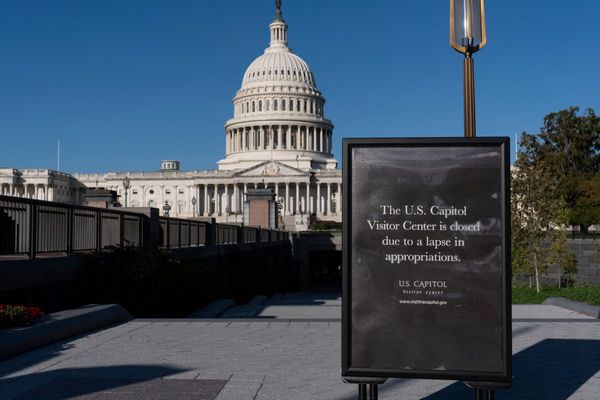President Trump has sent letters threatening tariffs of 25% or more to the leaders of Japan, South Korea and 12 other nations, turning up the heat on two close U.S. allies after months of trade talks have yet to seal a deal. The S&P 500 closed solidly lower in Monday stock market action, tacking on further losses as more announcements came during after-hours trading.
Trump's "reciprocal" tariff pause announced on April 9 comes to an end on Wednesday. Trump and Treasury Secretary Scott Bessent have warned that countries which don't agree to a deal by then should expect their tariff rate to jump back to the April 2 level, though the rates announced on Monday wouldn't take effect until Aug. 1.
The U.S. has only struck deals with the U.K. and Vietnam over the past three months, though talks with China have an established framework and are progressing along a different timeline, with an Aug. 12 deadline.
Trump Tariffs On Japan, South Korea
In letters to South Korea and Japan, Trump informed the key trading partners shortly after noon on Monday that the U.S. would impose "a Tariff of only 25%" on South Korean and Japanese imports to the U.S. The figure excludes categories of imports that are already subject to sectoral tariffs, including autos and steel.
Trump further threatened to escalate tariffs to match any retaliatory tariff imposed by either country.
Auto imports have been a sticking point in talks with both countries, while rice has loomed large in talks with Japan. According to S&P Mobility, Japan exports 1.3 million vehicles a year to the U.S., while South Korea sends 1.4 million vehicles. The U.S. exported 17,000 vehicles to Japan and 46,000 to South Korea.
While it's not shocking that Trump is turning to threats to break an impasse in trade talks, at least some investment firms were expecting a more patient approach with Japan and South Korea. Both countries "could be granted extensions, in our view," wrote Ulrike Hoffmann-Burchardi, chief investment officer of UBS Global Wealth Management in the Americas, in a July 3 note.
UBS also highlighted the possibility that the countries could agree to a purchase agreement with the U.S. Purchases of Boeing jets, for example, played a part in the U.K. trade deal.
Japan ran a $68.5 billion goods trade surplus and South Korea a $66 billion surplus with the U.S. in 2024.
Tariff Letters Sent To Malaysia And More
Five more tariff letters were posted later during Monday afternoon trading, notifying countries of the tariff rate they can expect on Aug. 1. The list includes Laos (40%), Myanmar (40%), South Africa (30%), Malaysia (25%) and Kazakhstan (25%). The rates are only marginally lower than the original April 2 rates and actually higher in the case of Malaysia, which got a 24% tariff in the original announcement.
Later in the afternoon, Trump added seven more tariff letters to the total. They included Bangladesh (35%), Bosnia (30%), Cambodia (36%), Indonesia (32%), Thailand (36%) and Tunisia (25%).
Trump Tariff Optimism Tested
Investors betting on the TACO trade — Trump Always Chickens Out — rode the S&P 500 to a 26% gain through last week from the 52-week low on April 8. Markets leaned not to take Trump tariff threats at face value. It's not clear whether the Trump tariff letters sent Monday have shifted that presumption.
Because the 90-day pause ends Wednesday, and new tariff levels announced this week won't take effect until Aug. 1, Trump seems to be prodding trading partners to strike a deal.
Trump gave Mexico and Canada, America's two biggest trading partners, a pass from so-called reciprocal tariffs, so they won't come in the line of fire this week, nor will China. While Trump threatened the European Union with a 50% tariff in May, markets don't take that seriously. At the moment, reports suggest that the EU is still hopeful that a deal can be struck.
Markets can tolerate the economic headwind from some level of tariffs. Yet, as the cycle of Trump tariff escalation and Chinese retaliation showed this spring, when tariffs get high enough to cancel out economic activity and trading partners strike back with retaliatory tariffs, the cost of tariffs spikes.
Trump should have learned the lesson that taking on all trading partners at one time as he did in April is a losing strategy. However, the risk of tit-for-tat tariff retaliation between the U.S. and EU or other nations can't be ruled out.
How High Will Tariffs Go?
While markets took a sanguine view ahead of this week's tariffs news, there's good reason to think that the average U.S. tariff rate is still heading higher in some places. Last week's deal with Vietnam probably shouldn't be seen in a vacuum. Would Vietnam have agreed to swallow 20% tariffs — down from the 46% rate announced on April 2 but double the 10% that actually took effect — unless officials had reason to believe that other Southeast Asian countries would face a similar rate.
The agreement with Vietnam also puts in place a 40% tariff for Chinese goods shipped via Vietnam to the U.S. to dodge the higher tariffs for direct imports of Chinese goods to the U.S.
"The draft Vietnam deal confirms that countries with sustained high trade surpluses with the U.S., and those acting as transshipment hubs for Chinese goods, may face higher baseline tariffs and additional duties on rerouted products," Hoffmann-Burchardi wrote.
Still, UBS viewed the U.S.-Vietnam deal as "a positive step toward more durable bilateral deals for the U.S. and toward greater clarity for investors."
"While tariffs will likely slow U.S. growth and add some inflation pressure into 2026, we do not expect them to derail the economy or cause a recession," Hoffmann-Burchardi said.
It's possible that passage of the One Big Beautiful Bill Act, since it will provide a fiscal stimulus that limits recession odds, will embolden Trump to push tariffs further than he otherwise would have.
S&P 500
The S&P 500 fell 0.8% in Monday afternoon stock market action, but the loss widened to 1% after hours. The S&P 500 had climbed 1.7% in the holiday-shortened week, pushing further into new-high ground.
Be sure to read IBD's The Big Picture column after each trading day to get the latest on the prevailing stock market trend and what it means for your trading decisions.







